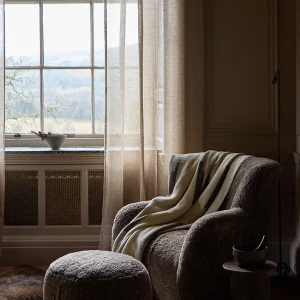A new tower on Melbourne’s King Street in Australia is set to look like ‘oil slick over water’ with a ‘pearlescent facade’, said director of Plus Architecture Jessica Liew.
The mixed-use skyscraper will be 64 storeys high, soaring 208.2m in the air. The development will be primarily residential with 431 apartments of one, two and three bedrooms, and nine luxury penthouse apartments.
Sporting a shimmering glass facade, the building can display various colours of pink, blue and purple when the changing light hits it. Not only unique in this aspect, but the tower stands out for its circular form that also allows for larger setbacks at the corners of the property.
295 King Street is made up of three segments: the base, an upper flared section where views of Flagstaff Gardens and beyond feature, and a central transitional section connecting the base to the tower above.

The local planning scheme in Melbourne suggests towers be set back at least 10 metres from the street and 24 metres from neighbouring large towers, ensuring ample air and light access.
The tower’s setback from Nicholson Place has been increased from five metres to a minimum of 6.4 metres and the setback to King Street has been increased from 3 metres to 4 metres.
The location is said to bring architectural merit to the area, for, despite 295-309 King Street not being on the edge of the city grid, it is a major road used by those passing through the city.

Map of Melbourne. 295 King Street located on the left near Flagstaff Gardens.
There has been some controversy surrounding the 208m tower whereby the Andrews government has approved the building, however Melbourne City Council oppose the development because of its high density.
With previous building proposals such as Australia 109 shelved due to breach of height restrictions (2012 proposed 388m, 103.96 over the current height restrictions in the CBD), it appears Plus Architecture had more sense to lower their design’s height to receive approval.
Plus Architecture Director Jess Liew commented on the development’s height restrictions:
‘The original TP submission of 267m required Civil Aviation Safety Authority (CASA) approval, which can be quite a timely process. Reducing the height to 208m meant such approval was no longer required and we were instead able to deal directly with the Department of Environment, Land, Water and Planning DELWP. Whilst the drop in height certainly reduces the yield of the development, we have improved the overall floor plate efficiency as the structure required for a shorter building is less than what was originally proposed.’

Melbourne’s tower height restrictions can become a little confusing with recent changes to the rules. Some changes include restricting developments to 24 sq m of total floor area for every one square metre of land, meaning if developers wanted to build higher than 24 floors, then they may need to offset the height with open space. Other changes include mandatory height limits for an initial one-year period and shadowing and wind controls.
According to a report from a senior officer of the Melbourne City Council, apartment towers in central Melbourne were being built four times the maximum densities permitted in other more crowded cities including New York and Hong Kong. Plot ratios have become a topic of discussion with proposals ranging from plot ratios of 1:37 and 1:65. Future construction in the CBD will permit ratios of 1:24. 295 King Street has a plot ratio of 1:38.
Read more:
The hills have eyes
A house on the Spanish coast overcomes a tight budget without compromising on the architect and client’s vision
Coded Couture – wearable tech reveals emotions
Imagine if our clothing portrayed our emotions in the same way that an animal’s fur does?





